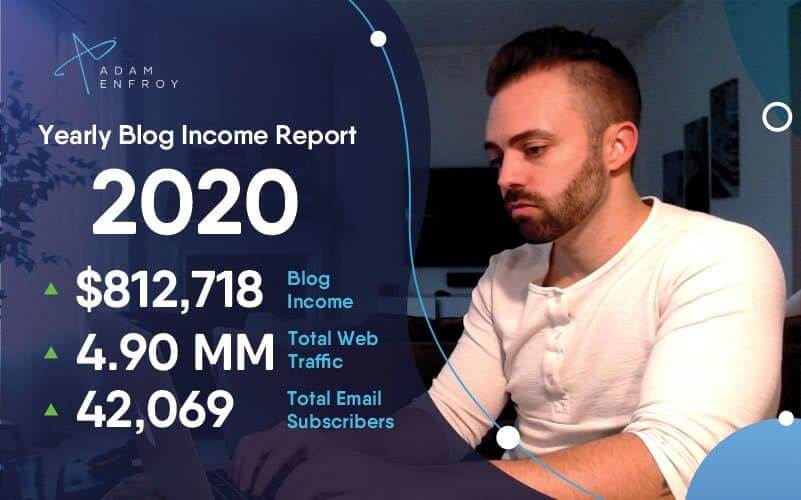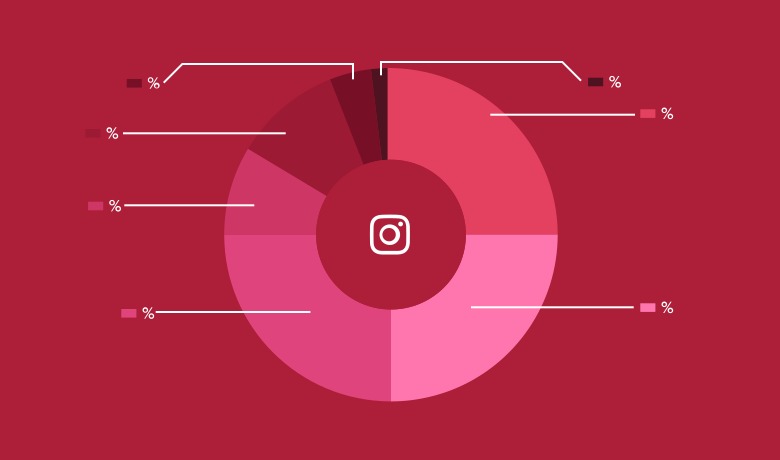
Warning: This graphic requires JavaScript. Please enable JavaScript for the best experience.
The first blog appeared on the internet 30 years ago. Today, there are millions of content creators producing blogs, vlogs, podcasts, video content, newsletters and more, and online creation has become a major industrial sector.
On YouTube alone, creators support the equivalent of 390,000 full-time jobs in the United States, according to the video giant — four times more than General Motors, America’s biggest automaker. More than 70 percent of American adults under 30 say they follow an influencer on social media, according to a 2022 Pew Research Center survey. A majority of those young social media users say influencers sway their decisions as consumers.
Press Enter to skip to end of carousel The Creator Economy A series examining the industry of online influence and its impact on American culture, media and power. End of carousel
The U.S. government does little to measure or regulate this industry, so hard data about the sector is difficult to find. But estimates suggest that online creation supports tens of millions of workers and attracts hundreds of millions of customers. This year, Goldman Sachs valued the creator economy at $250 billion and predicted that it would double to nearly half a trillion dollars in the next five years.
Here are some key moments in the rise of the creator economy.
1997-2005 Blogging takes off The first easy-to-use tools for online publishing appear, allowing anyone with light computer skills to share their thoughts with a digital community. Personality-driven blogs by young mothers begin to attract big audiences, while other blogs edge into the world of traditional media, covering news, politics, music, film and fashion.
1997 1997 Jorn Barger coins the term “weblog” on his website Robot Wisdom to describe the list of links that “log” his exploration of the early internet. (Monique Woo/The Washington Post) 1999 Self-publishing tools proliferate with the arrival of Blogger. Soon to follow: Movable Type (2001) and WordPress (2003). 2002 2002 The ad network Blogads launches. By 2005, the company provides revenue streams to some of the biggest sites, including Daily Kos, Wonkette and Daily Dish. 2004 “Mommy blogger” Heather Armstrong, a.k.a. Dooce, puts ads on her blog, pioneering a revenue model for personality-driven creators. (Paul Chinn/San Francisco Chronicle/Getty Images) 2004 2004 Perez Hilton upends celebrity media with his gossip blog PageSixSixSix, eventually dubbed “Hollywood’s most-hated website.” Perez Hilton’s blog eventually turned into perezhilton.com. (The Washington Post) 2005 The White House gives a press pass to Garrett Graff, editor of FishbowlDC, a blog about Washington news media.
Story continues below advertisement Advertisement Story continues below advertisement Advertisement
2006-2009 The party photo era Nightlife photography moves online, propelling a new generation of “it girls” to cult fandom on blogs like Hipster Runoff and the Cobrasnake. Together with the rise of reality TV and viral video stars on YouTube, they transform the definition of celebrity, making it seem as if almost anyone can become famous.
2006 2006 United Talent Agency becomes the first major talent agency to launch a digital department, signing up creators gaining prominence on the early social network, MySpace. 2007 One of the first gatherings of YouTube creators, 777, takes place in Manhattan’s Washington Square Park. NYC YouTube 777 Montage ( 2007 ) 2007 2007 YouTube launches its Partner Program, giving video creators a share of advertising revenue. 2008 Tavi Gevinson, then 11, starts Style Rookie, mixing runway reviews with personal reflections and outfit photos. She is part of a wave of fashion bloggers recruited by major brands with cash and free clothing. Tavi Gevinson at New York Fashion Week in 2010. (Andrew H. Walker/Getty Images) 2009 2009 The Station, the first YouTuber content house and an early collaborative channel, is formed in Venice Beach, Calif. Members of the group eventually birth Maker Studios, a multichannel network purchased by Disney in 2014 for a reported $500 million. ZOMBIES TAKE OVER YOUTUBE!!!!!! ( 2009 )
2010-2013 Money floods in Technological advances supercharge mobile phone use, allowing creators to easily record videos and upload them for a rapidly growing audience of smartphone users. Venture capitalists take note, pouring cash into multichannel networks, which offer YouTube creators services such as audience development and monetization in exchange for a cut of their earnings.
2010 2010 Apple introduces a front-facing camera on its iPhone 4, ushering in the era of the selfie. An early iteration of the selfie: the horizontal two-hand hold. (Joe Raedle/Getty Images) 2010 The first VidCon convention of video creators is held in the basement ballroom of the Hyatt Regency Century Plaza hotel in Century City, Calif. Vidcon 2010 ( 2010 ) 2011 2011 YouTube buys the multichannel network Next New Networks and adopts its practice of calling YouTubers “creators.” 2011 RewardStyle, later known as LTK, launches, allowing bloggers to earn money from the sales of clothing and other consumer goods generated from their content. LTK is the largest global digital marketing platform powered by creators. (Business Wire/AP) 2012 2012 4G broadband arrives in the United States, bringing faster mobile connections. Smartphone use soars from about a quarter of Americans in 2010 to 92 percent in 2023.
Story continues below advertisement Advertisement Story continues below advertisement Advertisement
2014-2016 America goes viral The wild growth of video apps like Vine and Snapchat — as well as the microblogging site Twitter — reveal the power of the internet to make any random person famous. But that power also begins to be weaponized, opening a bitter, new front in the culture war.
2014 2014 Vine — which let smartphone users record, edit and post six-second videos — becomes a cultural tastemaker, minting new memes by the minute and mainstreaming mobile video. Andrew B. Bachelor, a.k.a. King Bach, is awarded Viner of the Year at the Streamy Awards in Los Angeles in 2015. (Kevin Winter/Getty Images) 2014 “Alex from Target,” a 16-year-old working a cash register at a SuperTarget in Dallas, goes viral when a girl tweets his photo with a fire emoji. The teenager joins a surge of ordinary people who become instantly famous thanks to a social media post. 2014 2014 GamerGate, a harassment campaign against women in the video game industry that involved doxing and death threats, erupts, providing a blueprint for bad actors looking to use social media to attack marginalized groups. 2015 Live-streaming booms with the rise of video gaming site Twitch; personal live-streaming platform YouNow; and the Twitter service Periscope. Streamers earn money from fans sending tips. Tyler “Ninja” Blevins plays Call of Duty at TwitchCon in San Jose in 2018. (Robert Reiners/Getty Images) 2015 2015 Musical.ly goes mainstream with the #Don’tJudgeChallenge — a trend that involves users tricking themselves out to look ugly, then revealing themselves looking attractive. #DontJudgeChallenge ( 2016 ) 2015 The word “influencer” — a long-standing marketing term — is popularized as marketing executives shower money onto online creators, having discovered their power to influence purchases by their fans. 2016 2016 Vine collapses as its large stable of video creators flees to other platforms, frustrated by the app’s lack of support. The episode showed creators that they should never be reliant on a single social media app and established the economic power of individual creators, whose celebrity can now rival the biggest stars in Hollywood.
Story continues below advertisement Advertisement Story continues below advertisement Advertisement
2017-2019 Backlash and burnout The election of Donald Trump as president turns a spotlight on social media and its most problematic content, including misinformation and extreme stunts by content creators. Creators, meanwhile, start speaking openly about the mental health costs of nonstop creation and the tyranny of social media algorithms.
2017 2017 Advertisers flee YouTube — an event known as the “adpocalypse” — after news reports reveal that ads are appearing next to xenophobic, extremist and offensive content. Logan Paul during the 2015 MTV Movie Awards in Los Angeles. (Frederic J. Brown/AFP/Getty Images) 2017 The Federal Trade Commission issues disclosure guidelines for creators, forcing them to begin labeling sponsored content. Ironically, sponsored content becomes a status symbol. 2017 2017 The Chinese tech conglomerate ByteDance buys Musical.ly, relaunching it a year later as TikTok. (AP) 2018 Big content creators across the industry burn out and break down, sparking a national conversation about the pressures of social media success and the incessant demand for content.
2020-2023 The TikTok era As the coronavirus pandemic shuts down public life around the globe, people turn to their phones for shopping and entertainment. Downloads of TikTok and Twitch spike, and views skyrocket for online creators of every stripe.
2020 2020 TikTok becomes a mainstream social platform, amassing 500 million users in five months, according to Sensor Tower data. It joins Snapchat and Instagram as the most popular social networks among American teens, according to Statista. From left, TikTok stars Charli D’Amelio, Addison Rae and Dixie D’Amelio at the NBA All-Star Weekend in Chicago in 2020. (Bill Baptist/NBAE/Getty Images) 2021 Dozens of new apps allow creators to monetize every aspect of their lives, such as letting paying fans dictate how they dress or spend their time. 2021 2021 Members of the mob that storm the U.S. Capitol on Jan. 6 earn thousands of dollars in donations by live-streaming the event on platforms such as DLive. Trump supporters at the U.S. Capitol on Jan. 6, 2021. (Ricky Carioti/The Washington Post) 2021 Alex Cooper, creator of the sex-positive podcast “Call Her Daddy,” reportedly signs an exclusive three-year $60-million deal with Spotify, the biggest payout by the service for a woman-led podcast. (Spotify) 2021 2021 Silicon Valley pours $1.3 billion into creator economy start-ups such as #paid, which helps establish brand partnerships — the biggest source of creator revenue. 2022 Elon Musk buys Twitter. While many creators leave the platform, others — mostly high-profile, far-right influencers — are paid to post on the app for the first time. Workers install a sign at the San Francisco headquarters of X, formerly known as Twitter. (Noah Berger/AP) 2022 2022 Walmart launches Walmart Creator, described as “a one-stop portal … for creators to monetize shoppable products from the retailer.” Amazon also scales up its influencer program, as creators lean hard into e-commerce. 2023 Forbes unveils its second annual “Creator List,” with YouTuber Jimmy Donaldson in the top spot. Donaldson, a.k.a. MrBeast, is listed as having earnings of $82 million a year — and a future seat on the Forbes board. MrBeast is slimed onstage during the Nickelodeon Kids’ Choice Awards in 2022. (Alberto E. Rodriguez/Getty Images)
Source: www.washingtonpost.com



